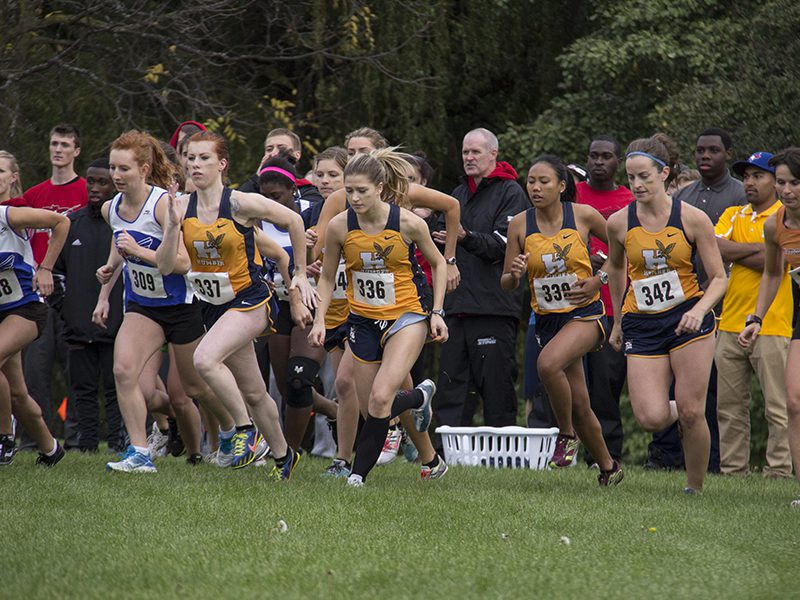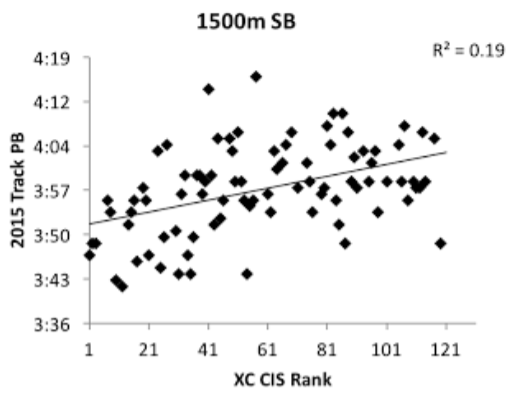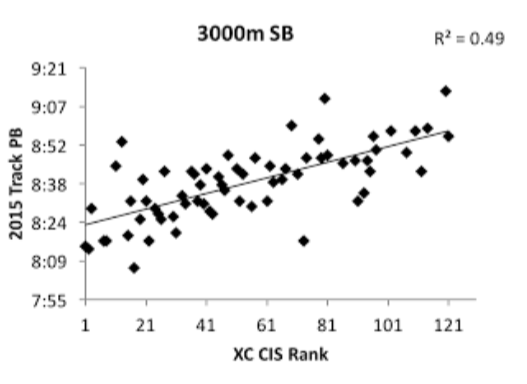Can winter track results be predictors for the upcoming cross-country season?

Can winter indoor races be an accurate predictor of performance during the next cross-country season?
Most university distance runners aim to peak twice a year: once during winter indoor track and then again for autumn cross country. Ask any competitive runner and they will tell you their favourite distance and time of year to race. Some prefer the muddy, unpredictable cross-country races, while others enjoy the weather-free, accurately measured loops of an indoor facility.
The goals of cross-country and indoor track are different. Of course in both cases you would like to win, but in cross-country, the aim is to catch the guy ahead of you. Cross-country finish times are often meaningless: a win is a win. Meanwhile, most track runners are focused on time goals. A win is great, but a win plus a PB is better.
RELATED: CIS Championships: Will we see an end to Guelph’s reign as Canada’s best?
RELATED: Cross-country championships: Guelph women win gold, men lose to Victoria
Track runners face the daunting task of competing against all of history. There’s a time attached to each event be it  an entry standard or a record. Consider Ross Proudfoot, who won the men’s 2015 CIS 3,000m indoor title. Equally notable to his win was his finishing time of 7:59.30, an agonizing 1/100th of a second shy of the championship record.
an entry standard or a record. Consider Ross Proudfoot, who won the men’s 2015 CIS 3,000m indoor title. Equally notable to his win was his finishing time of 7:59.30, an agonizing 1/100th of a second shy of the championship record.
In many ways, these two running disciplines are worlds apart. Some athletes do well in both. Again I’ll use Proudfoot as an example, who also won the 2015 national cross-country championships in Kingston, Ont. Many runners perform well at one race style but not the other.
So I asked myself, can a winter indoor race (either for 1,500m and 3,000m) be a useful predictor of a 10K cross-country event eight months away?
I ended up finding season best (SB) indoor times of men via the website www.all-athletics.com. (Note: In this post, I’m analyzing only men’s results simply for the sake of brevity. Similarly, future posts of mine will focus on only female results for my data source.)
Among the top 121 cross-country finishers, I tracked down 66 times for 3,000m, and another 86 for 1,500m. Admittedly this is not a perfect dataset. Nevertheless, I compared these SBs with cross-country placings in the 2015 Guelph CIS championship race.
Let’s first look at the 1,500m SBs versus cross-country plotted on the graph (right). 
You can see that when graphed, the points are scattered rather than forming a distinct line indicating that the trend is not so strong here.
The scatter is so large for the 1,500m that, fast or slow, I would not place serious bets on how well that runner would fare at nationals. More than half of the field was capable of running under four minutes, which is quite good. It is remarkable, for instance, that a 1,500m runner timed at 3:50 would not rank in the top 50 in cross-country, and yet there are some. Therefore the indoor 1,500m isn’t really a good predictor for a 10K cross-country race.
Next, I plotted 3000m SB times as a function of their CIS championship rank.
Although the fit is still not a perfect line, it is much improved over the 1,500m distance. Individuals who ranked as all-Canadians for cross-country (top 14) were generally capable of running faster than 8:30 for  3,000m (a fast time to be sure). Still, there was substantial variation among many athletes, even among higher-placed rankings. Were top cross-country runners saving themselves for next season, or still recovering from the previous one? It is hard to say for sure.
3,000m (a fast time to be sure). Still, there was substantial variation among many athletes, even among higher-placed rankings. Were top cross-country runners saving themselves for next season, or still recovering from the previous one? It is hard to say for sure.
If you were curious, the correlation between 1,500m and 3,000m times is actually worse than between the 3,000m and 10K cross-country events even though the distance jump is significantly less. How can this be? I’ll let the coaches try and explain that one…
So what can we learn from all of this?
Even if timed to the millisecond, we should take race results with a grain of salt when using them to predict the future. Finishing times and places can vary for a multitude of reasons, so more accurate timing does not translate to better understanding of what’s to come.
Secondly, the 3000m is a much better predictor of the 10K distance, but it is surprising just how much better it is in making these predictions. Finally, given the months separating these race times, be it for 3K or 1.5K, it is impressive there is any predictive power at all.
To each their own preferred distance. I haven’t even discussed summer road races, which many runners partake in as well. Athletes are capable of picking their battles when given the chance. It’s hard to peak multiple times a year. So when developing a young runner, it never hurts to discuss what their favourite distance is.


